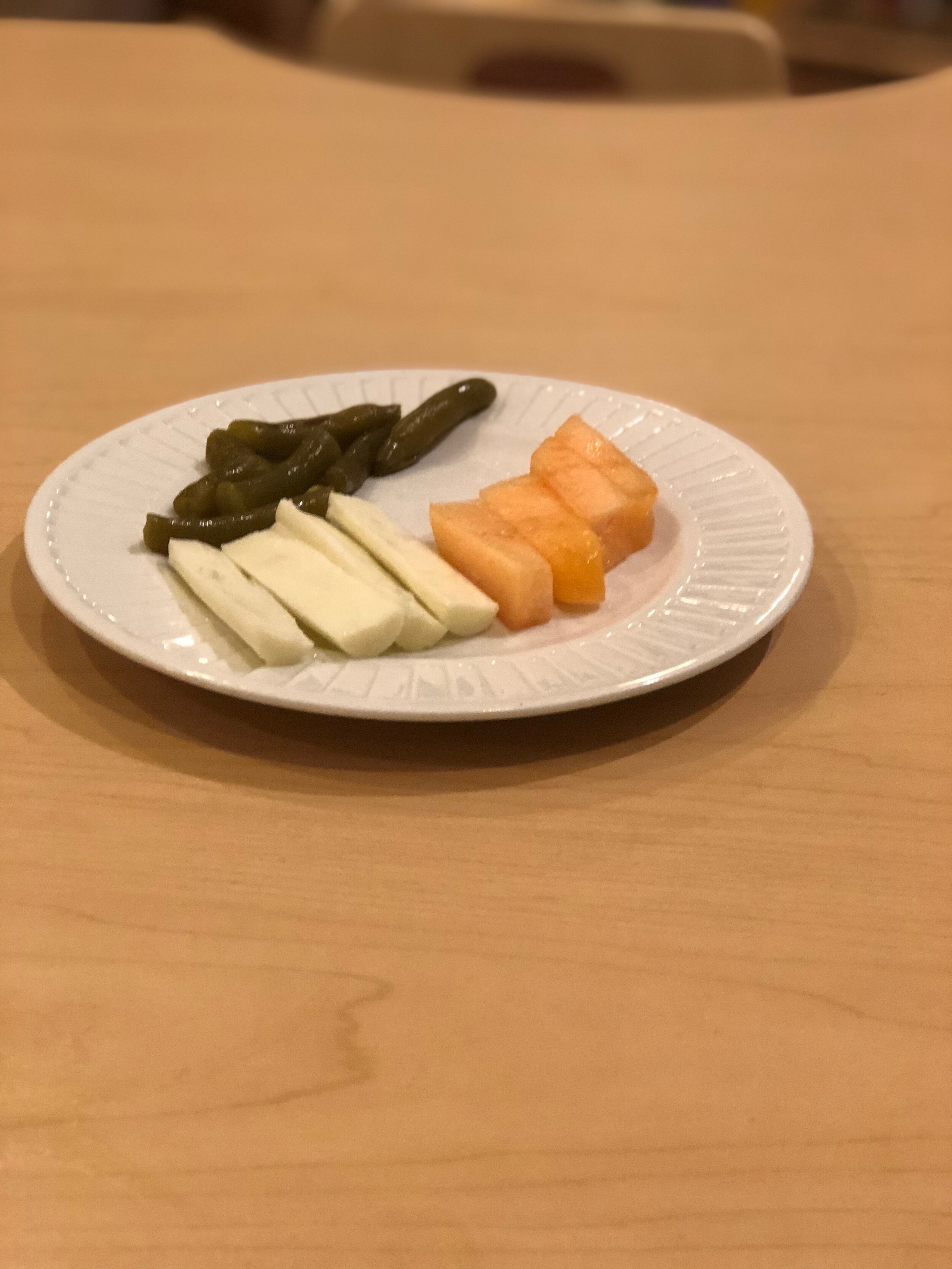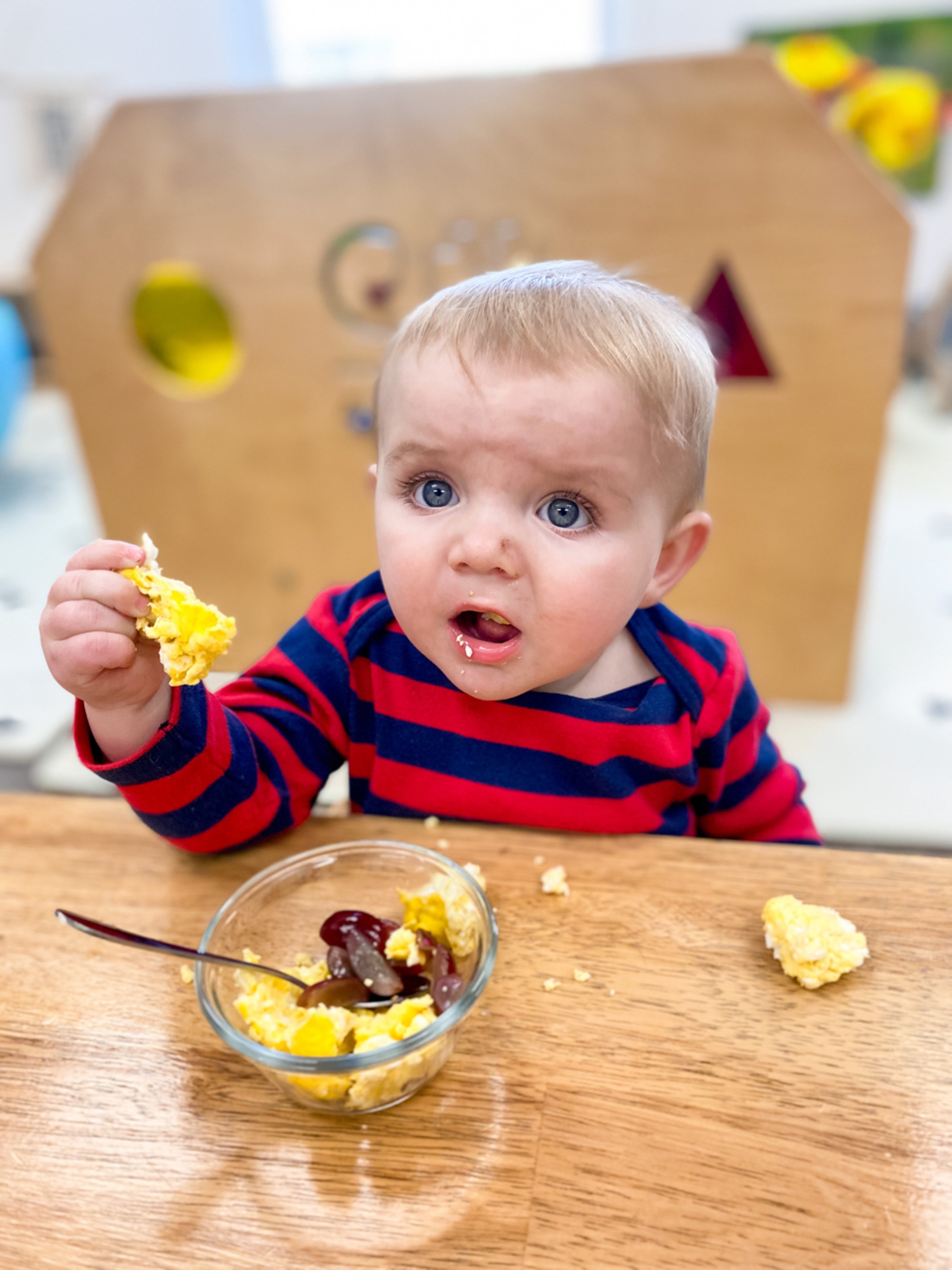Baby-Led Weaning Policy
Baby-Led Weaning
Baby-led weaning is a practice where babies 6 months old or older jump straight to finger foods as soon as solids are introduced, bypassing purees and mashed-up foods. It's called baby-led because that's what the premise is — letting your little one feed themselves the healthy foods they want to eat right from the start (which is why this works only for a baby who's at least 6 months old and capable of self-feeding). And it allows babies to learn how to chew (or more accurately, gum) first, then swallow. It also prevents adults from pushing food, since babies are in control of how much they put into their mouths.
Benefits of baby-led weaning:
Familiar with more different textures and flavors than babies who are fed purees, which may make them more likely to develop more varied and healthy food preferences in the long run. Plus a number of studies have shown that babies who eat a variety of foods (including peanut products and fish) may actually be less likely to have food allergies later in life.
Less likely to become overweight than children who are spoon-fed. With spoon-feeding, the parent is in control (which may make babies eat faster and more than they really need, potentially leading to a habit of ignoring feelings of fullness) — but similar to breastfeeding, baby-led weaning allows baby to self-regulate how much she eats based on her hunger levels.
Developing manual dexterity and hand-eye coordination skills.
Learning how to chew, which aids in digestion.
What types of foods are best?
As long as it’s soft, cut into small, manageable pieces (baby fist-size) and not on the list of foods that pose a choking risk, it’s on the baby-led weaning menu. Don’t worry about how much or how little your baby eats in the first few months; just do your best to serve up a well-rounded diet. Consider offering a food from each of these food groups every day to ensure baby’s getting the nutrients they needs:
Grains, such as whole-wheat fusilli pasta or wheat toast with hummus
Healthy fats, such as avocados or humus (eaten on their own or smeared on bread)
Protein, such as boiled chicken or beef, eggs or grilled fish (be careful to remove any bones)
Fruits and vegetables, such as a piece of banana or avocado; a ripe triangle of pear; steamed broccoli, carrots or green beans; or sweet-potato fries (all of these are easily mashed by toothless gums and are either shaped like thick sticks or can easily be cut into thick strips, which are easy for baby to hold)
Dairy, such as yogurt and soft pasteurized cheeses like ricotta or cottage cheese (if given the chance, babies can learn to spoon feed themselves)
There’s no need to add salt, sugar or artificial sweeteners to your baby’s foods, since they don’t add any nutritional value. What’s more, they mask the innate flavors of baby’s foods — and some research has even found that babies don’t actually have any preference at all for these tastes. Plus, consistent use of salt or sugar sets kids up to prefer salty or sugary foods in the long run. (It’s fine, however, to season food with herbs and spices — your baby might love the kick in flavor.) Skip chips, cookies and other prepackaged, prepared foods, too, since they tend to be devoid of nutrients and full of additives and unhealthy trans-fats.
Tips on Getting Started:
You may be skeptical that your 6-month-old will be able to handle whole pieces of food right off the bat, but your baby’s ability to chow down will likely amaze you. To get started follow these basic principles:
Invest in a big bib. Consider dressing your little one in just a diaper and covering her with an oversize bib or smock and put a drop cloth or newspaper on the floor beneath your child’s chair.
Continuing to nurse or bottle-feed. Provide nursing or bottles on demand. Your baby can self-regulate hunger and food from birth. Since your baby is getting the nutrition, they need form formula or breast milk, don’t be surprised if they eat very little in the first few months. Let your baby set the pace. As they get more proficient and start to eat more, they’ll gradually consume less breast milk or formula in favor of the solid foods they are learning to love.
Skip the schedule. You may have heard that you should put your baby on a feeding schedule that incorporates breast milk or formula plus three meals of solid food a day. But if you choose baby-led weaning, simply offer solids at mealtime, and let your baby decide if she’s up for eating them.
Cut food into thick sticks or strips. Slice foods up so baby can hold them in their fist and chew from the top down (instead of tiny bite-sized pieces).
Start slowly. At the beginning, you only need to place one or two pieces of food in front of your little one at mealtimes. More and you may overwhelm baby with too many choices.
Dine together. There’s no reason if your dinner is steamed cauliflower and salmon that baby can’t eat the same foods right along with you. Eating is a social activity, so let your little one see what you do with food and give them a chance to mimic you. Baby wants your toast or reaches for the banana you’re snacking on? Offer her a portion (as long as it’s baby-appropriate).
Encourage fun. Think of solid food meals as playtime, when baby explores different textures and experiments with tasting and chewing. Baby-led weaning is all about getting comfortable with various foods.
Offer a variety of foods. Over time, expose your baby to a wide range of choices to help them to develop an adventurous palate and make them less likely to be a picky eater later in life. Serve up foods of different colors (roasted tomatoes, steamed green beans and sweet potatoes) and different textures (smooth avocados, crisp watermelon, grainy whole-wheat bread and even tender cooked pasta).






